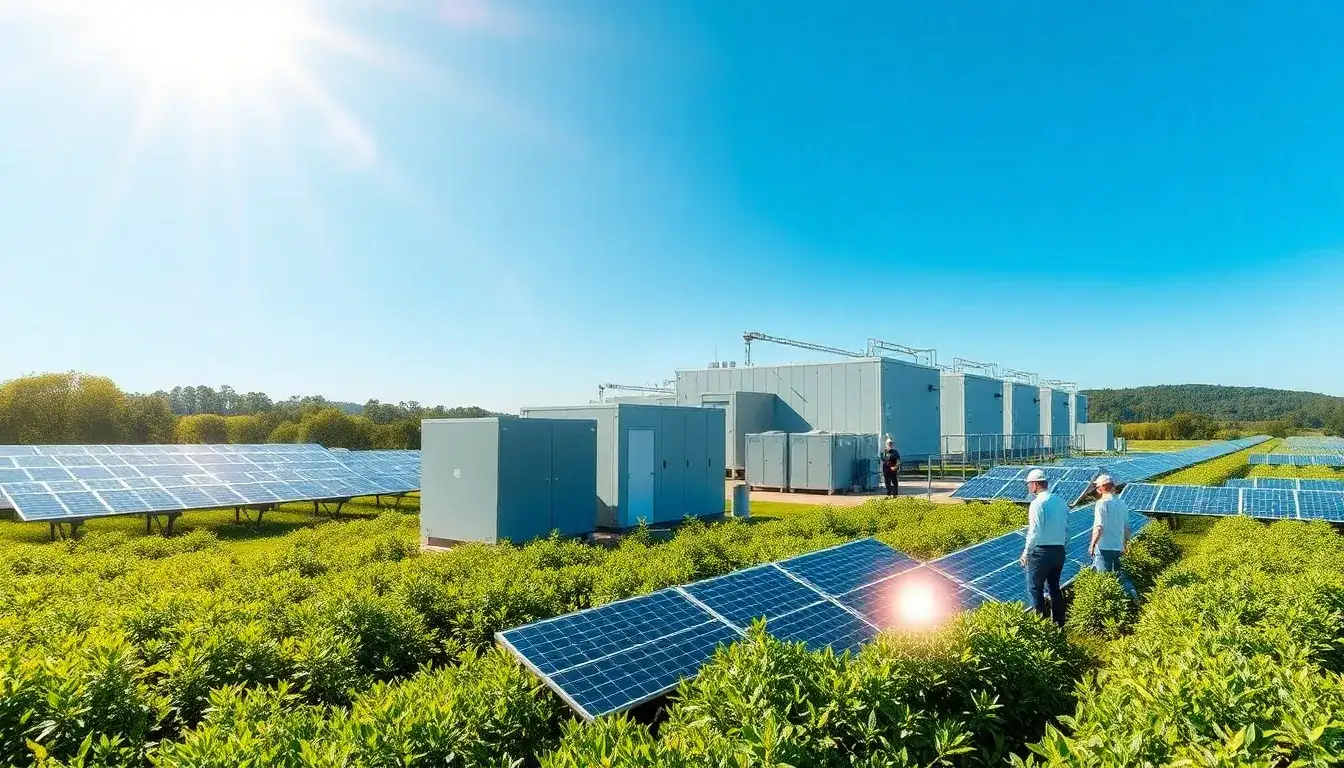Ministry of Power Advisory on Co-Locating Energy Storage Systems with Solar Power Projects to Enhance Grid Stability and Cost Efficiency
India is targeting an ambitious goal of achieving 500 GW of non-fossil fuel capacity by 2030, necessitating a substantial increase in renewable energy sources such as solar and wind. However, the intermittent nature of these sources presents challenges to grid stability, particularly during high-demand periods when energy generation may be low. As a solution, energy storage systems are recognized as vital for maintaining grid stability and optimizing energy utilization. These systems can store surplus energy generated during peak production times and release it when generation is low, thereby enhancing overall reliability.
As of December 2024, India has an installed energy storage capacity of 4.86 GW, which comprises 4.75 GW of pumped storage projects and 0.11 GW of battery energy storage systems. The National Electricity Plan indicates that to facilitate the integration of 364 GW of solar and 121 GW of wind capacity by 2031-32, India will need a total of 73.93 GW of storage capacity, incorporating both pumped storage and battery systems.
To achieve this target, it is advised that renewable energy agencies and state utilities incorporate a minimum of two-hour energy storage, equating to at least 10 percent of a solar project’s capacity, in future solar tenders. This initiative aims to mitigate the intermittency of renewable energy and bolster grid support during peak demand.
To ensure availability when solar generation is low, a compliance mechanism could be integrated into bidding documents. Additionally, distribution licensees might consider mandating two-hour storage for rooftop solar installations. This approach not only enhances supply reliability for consumers but also helps manage excess solar power injection into the grid during peak generation hours. By implementing these strategies, approximately 14 GW or 28 GWh of storage capacity could be added by 2030.
The recent decline in battery prices may further lower power purchase costs, especially during evening hours when solar generation is absent, and energy prices tend to rise. Storage systems can operate in various modes. In a single-cycle operation, storage is charged using co-located solar power and discharged during evening hours. In a double-cycle operation, storage can be charged with both solar power and grid electricity during low-demand periods, allowing discharge during peak hours, particularly when solar generation is inadequate. This adaptability can optimize energy use and relieve strain on the grid.
Integrating storage systems with solar projects not only strengthens grid stability but also offers long-term economic benefits. It enhances the efficiency of transmission infrastructure by improving evening utilization of lines built for solar power evacuation. Consequently, this reduces the necessity for additional transmission infrastructure, associated costs, and bolsters energy security. The overall efficiency of renewable energy systems will also improve, making clean energy more viable and sustainable in the long term.
The incorporation of storage systems alongside solar power projects is crucial for ensuring the stability and cost-effectiveness of renewable energy. By making storage an integral component of solar tenders and distribution networks, India can effectively manage the increasing share of renewable energy while maintaining grid stability and minimizing electricity costs. These measures have received approval from the relevant authorities, marking a significant policy advancement towards a more resilient and efficient energy future.
Original article by NenPower, If reposted, please credit the source: https://nenpower.com/blog/ministry-of-power-recommends-co-location-of-energy-storage-with-solar-projects-for-improved-grid-stability-and-cost-efficiency/



